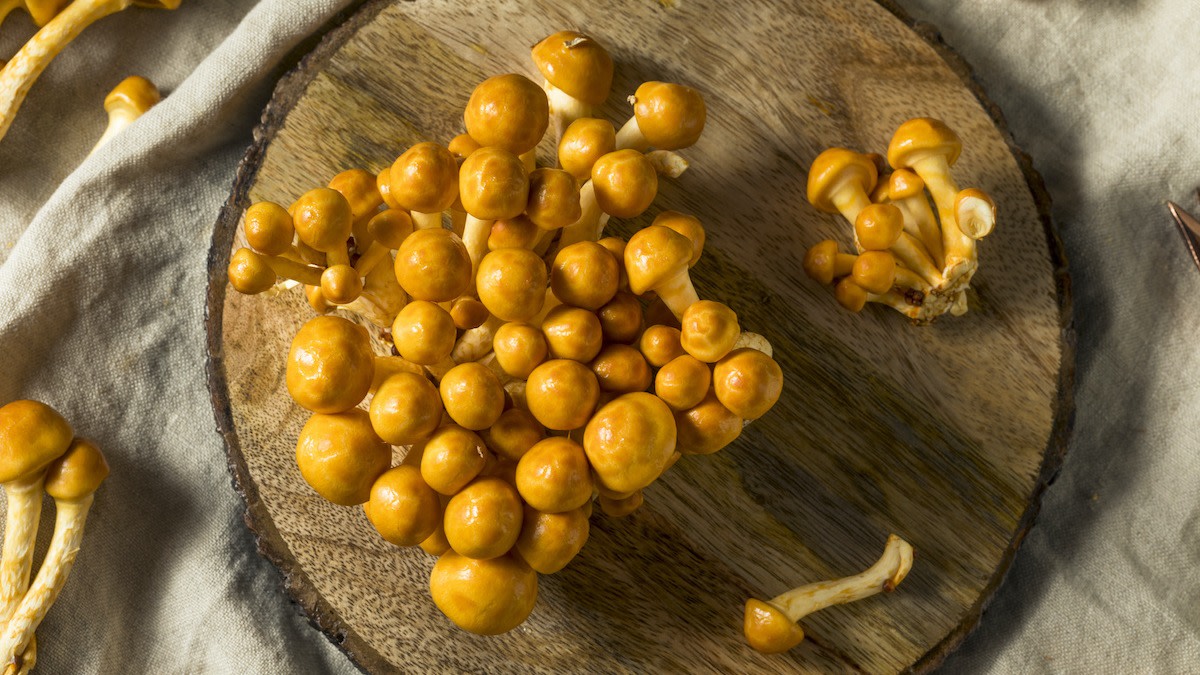Nameko Mushrooms: How to Cook With Nameko Mushrooms
Written by MasterClass
Last updated: Jun 7, 2021 • 2 min read
Though they aren’t always easy to find in the United States, nameko mushrooms are one of the most common mushrooms in Japan.
Learn From the Best
What Are Nameko Mushrooms?
Nameko mushrooms (Pholiota microspora) are an important part of Japanese cooking and an ingredient in many dishes, including traditional miso soup. Nameko mushrooms have long white stems and smooth caps that range in color from amber to an orange-brown. Each cap is no more than an inch in diameter and has a shiny gelatinous covering. It’s this slippery cap that earned the mushroom its name, as nameko literally translates to “slimy mushroom” in Japanese.
Where Do Nameko Mushrooms Grow?
Although native to most of Asia, the majority of nameko mushrooms can be found in Japan, growing in clusters around debris like the dead trunks of oak or beech trees, from October to February. Thanks to nameko gardens, cultivation of this type of mushroom is year-round in Japan, Southern California, and other parts of the world. Although not available at all grocery stores, nameko mushrooms can be found both canned and dried at specialty markets.
What Do Nameko Mushrooms Taste Like?
As is the case with a lot of fresh mushrooms, namekos don’t taste the same way they smell. They have an earthy flavor and a subtle fruit-like taste, but they smell more like butterscotch or cashews. (This aroma is why nameko mushrooms are sometimes called “butterscotch mushrooms” in English.)
Nameko mushrooms are a good source of protein, and they include such essential minerals as potassium and calcium, as well as polysaccharides. Vitamins like riboflavin, niacin, and thiamin are also found in nameko mushrooms.
How to Cook With Nameko Mushrooms
Traditionally, nameko mushrooms have been used in Japan to both thicken and enhance the flavor of miso soup, but that’s just the beginning.
- 1. In nabemono: Colloquially known as nabe or “one-pot stew,” this traditional boiled soup of tofu, bean sprouts, dark green vegetables, radish, onion, fish, poultry, steak, shallots, garlic, and other spices is basically the heartier version of miso soup and one of the best recipes in which to include nameko.
- 2. As a natural thickener: The gelatin in the caps of nameko mushrooms makes them a perfect thickening agent for soups, sauces, gravies, stews, and, of course, miso.
- 3. As an appetizer: Chopped and mixed with cabbage, carrots, and a bit of soy sauce, nameko mushrooms create a unique salsa. Sliced on crostini with olive oil, a pinch of salt, and a dash of tobachan sauce, they make for a delicious bruschetta.
- 4. On a charcuterie board: The texture of nameko mushrooms develops during sautéeing and grilling. Once prepared, nameko mushrooms are right at home with goat cheese, black olives, almonds, pinot noir, and sherry.
- 5. In Italian dishes. As tasty as they are in a traditional stir-fry or miso, they’re just as delicious as a pizza topping or mixed in with pasta or risotto.
Want to Learn More About Cooking?
Become a better chef with the MasterClass Annual Membership. Gain access to exclusive video lessons taught by the world’s best, including Niki Nakayama, Gabriela Cámara, Chef Thomas Keller, Yotam Ottolenghi, Dominique Ansel, Gordon Ramsay, Alice Waters, and more.
